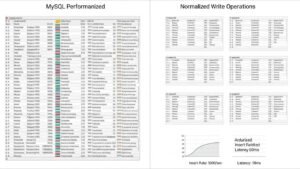Ola Electric Shares: SoftBank Stake Sale and Profitability Outlook
- THE MAG POST

- 16 hours ago
- 5 min read

Ola Electric's stock performance has recently captured significant attention, marked by a notable dip on Friday, September 5th, following disclosures about SoftBank Group's strategic reduction in its stake. This move saw the Japanese investor's shareholding decrease from 17.83% to 15.68%, a development that naturally raises questions among market watchers and potential investors about the company's immediate future and long-term prospects. The electric scooter maker's scrip traded down approximately 3.72% at Rs 62.13 per share during intraday trading, reflecting the market's initial reaction to the news of SoftBank's divestment. This strategic shift by a major shareholder, executed through its investment arm, underscores the complex interplay of capital reallocation, regulatory disclosures, and market sentiment that often shapes the trajectory of companies in rapidly evolving sectors like electric mobility, particularly for a player like Ola Electric.
Ola Electric's Shifting Shareholder Landscape
The recent movements in Ola Electric's shareholding, particularly SoftBank's strategic reduction of its stake, have sparked considerable interest and analysis within the investment community. While the headline might suggest a downturn, understanding the nuances behind these transactions reveals a more complex picture of evolving investor confidence and company strategy. SoftBank's divestment, though significant, positions it to potentially reallocate capital while still maintaining a substantial presence as the second-largest shareholder. This strategic maneuver, executed through its investment arm, adheres to regulatory disclosure thresholds, indicating a well-planned financial adjustment rather than a panicked exit. The market's reaction, a temporary dip followed by a notable recovery, underscores the inherent volatility and speculative nature often associated with growth-stage companies in emerging sectors like electric mobility.
Decoding SoftBank's Strategic Stake Reduction
SoftBank Group's decision to trim its stake in Ola Electric, decreasing its ownership from approximately 17.83% to 15.68%, represents a significant financial adjustment. This reduction, amounting to over 94 million equity shares or about 2.15% of the company's paid-up capital, was conducted through open market transactions over a period spanning July 15 to September 2, 2025. The sale, executed by SoftBank's investment vehicle SVF II Ostrich (DE) LLC, crossed the 2% disclosure threshold mandated by SEBI's takeover regulations, signaling a deliberate and transparent divestment strategy. Despite this reduction, SoftBank continues to be a major investor, surpassed only by founder Bhavish Aggarwal, highlighting its ongoing belief in Ola Electric's long-term potential. Such moves are typical in the venture capital lifecycle, where early investors often seek to monetize a portion of their holdings as a company matures, balancing capital realization with continued strategic alignment.
The Rollercoaster Ride of Ola Electric Shares
Following a period of significant decline that saw Ola Electric shares reach record lows, the stock experienced a remarkable surge of approximately 77% over a three-week span. This impressive rally was largely attributed to the company securing crucial Production Linked Incentive (PLI) certification for its next-generation (Gen 3) scooters. Management anticipates that this certification will not only enhance profit margins but also accelerate the company's trajectory toward profitability. The Automotive Research Association of India's approval under the Ministry of Heavy Industries' scheme makes Ola's Gen 3 S1 lineup eligible for substantial sales incentives, ranging from 13% to 18%, which are expected to remain in effect until 2028. These seven scooter models are pivotal, contributing over half of Ola's current sales volume. With both Gen 2 and Gen 3 scooters now certified, Ola projects improved profitability starting in the second quarter of FY26 and is actively working towards achieving EBITDA positivity.
Fundamentals Under Scrutiny Amidst Market Volatility
Despite the recent positive market performance and the strategic advantages gained from PLI certification, Ola Electric's underlying financial fundamentals warrant careful examination. The company reported a net loss of around ₹428 crore for the first quarter, with revenues experiencing a year-on-year decline to approximately ₹828 crore. While profit margins showed improvement, reaching 25.6%, the overall financial health remains a key concern for investors. Nevertheless, at its recent Annual General Meeting (AGM), Ola successfully obtained shareholder approval to reallocate funds initially earmarked for its Initial Public Offering (IPO) and to extend the deployment timelines for these funds. This strategic financial recalibration is crucial as the company navigates its path toward sustained profitability and strengthens its market position in the competitive electric vehicle landscape.
Looking Ahead: Profitability and Strategic Financial Management
The path forward for Ola Electric appears to be one of strategic financial management and a focused pursuit of profitability, bolstered by recent regulatory approvals. The PLI certification for its Gen 3 scooters is a significant tailwind, promising improved margins and a faster route to positive earnings. Management's projection of profitability gains beginning in Q2FY26 and the objective of achieving EBITDA positivity signal a clear financial roadmap. Furthermore, the shareholder approval to reallocate IPO funds and adjust deployment timelines provides the company with the necessary financial flexibility to adapt to market dynamics and pursue its growth objectives. While challenges persist, particularly concerning revenue generation and net losses, the company's strategic decisions, coupled with investor support, aim to fortify its financial standing and solidify its position in the burgeoning electric vehicle market.
Key Takeaways on Ola Electric's Market Position
In summary, Ola Electric is navigating a dynamic period characterized by significant shareholder adjustments, market volatility, and strategic regulatory wins. SoftBank's stake reduction, while notable, reflects a common investor strategy rather than a vote of no confidence. The company's stock has demonstrated resilience, rebounding strongly after hitting lows, largely driven by the crucial PLI certification for its Gen 3 scooters. This certification is poised to enhance profitability and expedite the company's journey toward financial stability. Despite reporting a recent net loss and reduced revenues, Ola has secured shareholder backing for financial recalibration, underscoring a commitment to achieving profitability and EBITDA positivity in the near future. The company's ability to leverage these certifications and manage its finances effectively will be critical in its ongoing pursuit of sustained growth and market leadership in the electric mobility sector.
Key Development | Details | Implication |
SoftBank Stake Reduction | Decreased from 17.83% to 15.68% (approx. 2.15% divestment) via open market deals between July 15 and Sept 2, 2025. | Strategic capital reallocation by a major investor; SoftBank remains the second-largest shareholder. |
Share Price Movement | Fell 4% on Sept 5th; previously rallied 77% in three weeks after reaching record lows. | Market volatility influenced by shareholder actions and company-specific news. |
PLI Certification | Gen 3 scooters certified under Ministry of Heavy Industries' scheme, eligible for 13-18% incentives until 2028. | Expected to improve margins, accelerate path to profitability, and boost sales of key models. |
Financial Performance (Q1) | Net loss of ₹428 crore; revenues halved year-on-year to ₹828 crore; margins improved to 25.6%. | Fundamentals remain a concern despite improved margins; focus on achieving profitability. |
Shareholder Approval | Approved reallocation of IPO funds and extension of deployment timelines at AGM. | Provides financial flexibility for strategic adjustments and future growth initiatives. |






















































Comments